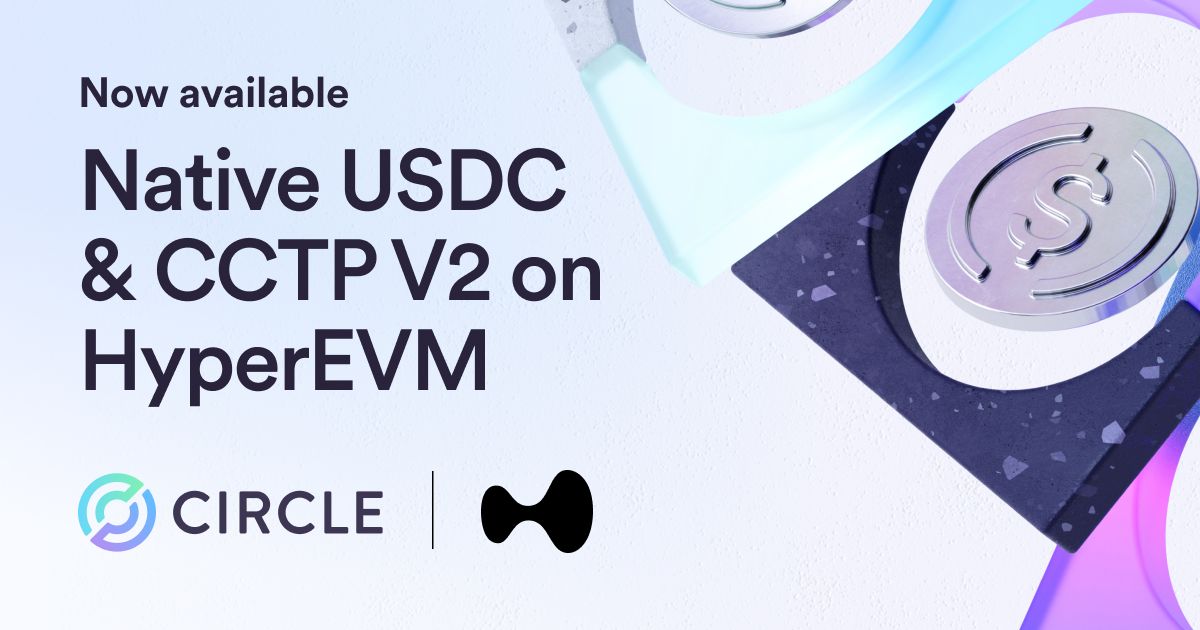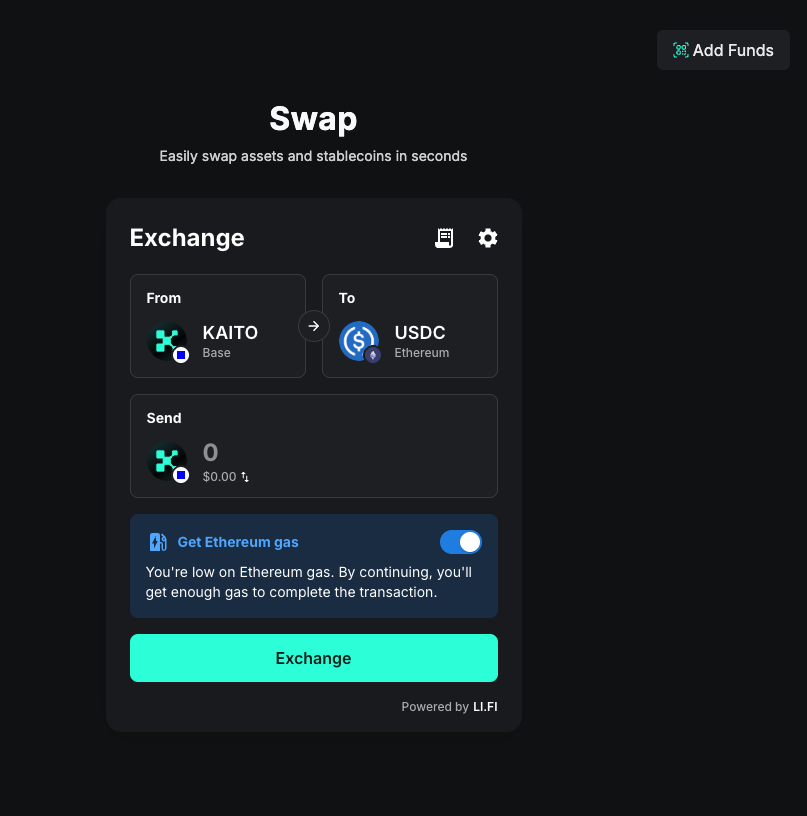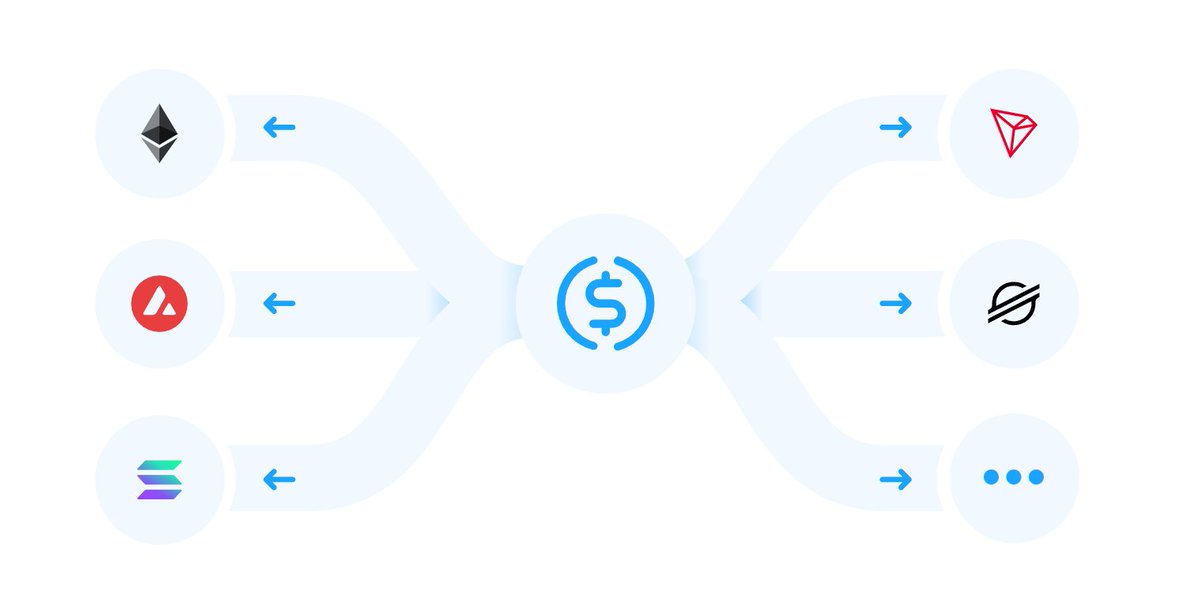Cena USD Coin
w EUR

Informacje o USD Coin

Zastrzeżenie
OKX nie udziela rekomendacji dotyczących inwestycji ani aktywów. Musisz dokładnie rozważyć, czy handel lub posiadanie aktywów cyfrowych jest dla Ciebie odpowiednie w świetle Twojej sytuacji finansowej. W przypadku pytań dotyczących konkretnej sytuacji skonsultuj się ze swoim doradcą prawnym, podatkowym lub specjalistą ds. inwestycji. Aby uzyskać więcej informacji, zapoznaj się z warunkami użytkowania i ostrzeżeniem o ryzyku. Korzystając z witryny internetowej strony trzeciej („TWP”), akceptujesz, że wszelkie korzystanie z TPW będzie podlegać warunkom TPW i będzie regulowane przez te warunki. O ile nie zostało to wyraźnie określone na piśmie, OKX i jego podmioty stowarzyszone („OKX”) nie są w żaden sposób powiązane z właścicielem lub operatorem TPW. Zgadzasz się, że OKX nie ponosi odpowiedzialności za jakiekolwiek straty, szkody i inne konsekwencje wynikające z korzystania z TPW. Pamiętaj, że korzystanie z TPW może spowodować utratę lub zmniejszenie Twoich aktywów. Produkt może nie być dostępny we wszystkich jurysdykcjach.
Wydajność ceny USD Coin
USD Coin na mediach społecznościowych






Przewodniki

Utwórz bezpłatne konto OKX.
Zasil swoje konto.
Wybierz swoją kryptowalutę.
Najczęściej zadawane pytania USD Coin
Użytkownicy mogą kupować USDC na niezawodnych giełdach kryptowalut, takich jak OKX. Mogą kupować USDC za pomocą ważnej karty kredytowej lub debetowej. Wystarczy kliknąć opcję „Kup za pomocą karty” w menu nagłówka „Kup kryptowalutę”.
Użytkownicy mogą również zdobywać tokeny USDC z różnych ofert par handlowych w terminalu handlu spot OKX. Mogą również odwiedzić stronę Przelicz OKX, aby zamienić istniejące kryptowaluty na USDC bez opłat i poślizgów cenowych.
Użytkownicy mogą także kupować USDC z platformy handlowej P2P OKX. Handel P2P pozwala użytkownikom kupować i sprzedawać kryptowaluty bezpośrednio od innych użytkowników bez pośredników.
Na OKX radzimy sprawdzać każdą kryptowalutę przed obiektywną inwestycją. Kryptowaluty są uważane za aktywa wysokiego ryzyka i podatne na gwałtowne zmiany cen. Dlatego zalecamy, aby inwestować tylko tyle, ile można stracić.
Co więcej, podobnie jak wszystkie kryptowaluty, USDC jest niestabilny i niesie ze sobą ryzyko inwestycyjne. Dlatego przed inwestycją należy przeprowadzić własne badania (DYOR) i ocenić swój apetyt na ryzyko przed kontynuowaniem.
Pogłąb wiedzę o USD Coin
USD Coin (USDC) to inteligentny kontrakt typu open source oparty nastablecoinWydana przez międzynarodową firmę fintech o nazwie Circle i amerykańską giełdę kryptowalut, Coinbase. Razem tworzą Centre Consortium, odpowiedzialne za generowanie i wykup wszystkich tokenów USDC.
Wprowadzony na rynek w październiku 2018 roku, USDC jest zabezpieczony przez walutę lokalną i powiązany z dolarem amerykańskim w stosunku 1:1. Jest to możliwe, ponieważ połączenie gotówki, ekwiwalentów gotówki i krótkoterminowych obligacji skarbowych Stanów Zjednoczonych wspiera USDC. Około 10 procent rezerw USDC jest przechowywanych w gotówce i ekwiwalentach gotówki, a pozostała część w krótkoterminowych obligacjach skarbowych Stanów Zjednoczonych.
Centre uważa, że prawdziwa interoperacyjność finansowa między kryptowalutami i walutami lokalnymi jest możliwa tylko wtedy, gdy istnieje środek wymiany wartości z tablecoinami. USDC został stworzony, aby zaspokoić potrzebę przejrzystej i bezpiecznej stabilnej kryptowaluty wspieranej przez walutę lokalną, której w tym czasie brakowało na rynku.
Jego twórcy, Circle i Coinbase, chcieli zaoferować stablecoina wspieranego przez rzeczywiste aktywa, regularnie kontrolowanego i zapewniającego wysoką przejrzystość i zarządzanie. USDC został zaprojektowany tak, aby był bardziej przejrzysty pod względem finansowym i operacyjnym niż inne stablecoiny na rynku, co pomogłoby zbudować zaufanie i zachęcić do większego przyjęcia.
Grant Thornton to niezależna firma księgowa, która co miesiąc przeprowadza atesty stablecoina USDC. Firma zapewnia niezależną weryfikację rezerw wspierających USDC i zapewnia, że są one przechowywane w sposób zgodny z polityką rezerw Centre Consortium.
Jeremy Allaire, dyrektor generalny firmy Circle, podkreślił znaczenie przejrzystości i odpowiedzialności w działaniu USDC, a zaangażowanie firmy Grant Thornton jest kluczowym elementem tych wysiłków. Zaangażowanie USDC w przejrzystość, wspierane przez niezależną weryfikację dostarczoną przez firmę Grant Thornton, zapewnia większą pewność i zaufanie użytkownikom, którzy chcą kupić stablecoina.
Jak działa USDC
USDC jest zbudowany naEthereumblockchain, zdecentralizowana platforma, która umożliwia tworzenieinteligentne kontraktyorazzdecentralizowanych aplikacji (dApp). USDC to token ERC-20 kompatybilny z dowolnym portfelem lub giełdą Ethereum obsługującą tokeny ERC-20. Technologia stojąca za USDC ma na celu zapewnienie użytkownikom stabilności i niezawodności, co czyni go popularnym wyborem dla handlowców kryptowalut.
Każdy token USDC jest wspierany przez jednego dolara amerykańskiego, co oznacza, że jego wartość jest bezpośrednio powiązana z wartością dolara amerykańskiego. Zapewnia to wysoki poziom stabilności, co może być szczególnie przydatne podczas zmienności rynku.
Centre Consortium nadzoruje tworzenie i zarządzanie tokenami USDC. Zapewnia, że każdy token USDC jest zabezpieczony odpowiednim dolarem amerykańskim i że podaż tokenów USDC jest zawsze równa ilości dolarów amerykańskich przechowywanych w rezerwie.
USDC jest obecnie emitowany również na wielu blockchainach, w tym Ethereum (format ERC-20),Tron(format TRC-20),Algorand(format ASA),Avalanche(format ERC-20), Flow (format FT),Stellar(jako aktywa Stellar),Solana(format SPL) orazHedera(format SDK).
Do czego służy USDC?
Będąc jednym z najpopularniejszych stablecoinów powiązanych z USD, USDC znajduje szerokie zastosowanie jako środek przechowywania wartości podczas niestabilnych warunków rynkowych lub po prostu dla osób, które chcą ekspozycji na walutę lokalną poza tradycyjnymi ścieżkami bankowymi. Dlatego wielu handlowców przenosi swoje przydziały kryptowalut do USDC, aby uniknąć wpływu nagłych zmian cen. Może to wyjaśniać, dlaczego popyt na USDC znacznie wzrasta w okresach spadkowych.
USDC jest również powszechnie używany przez wiele platform giełdowych do wprowadzania nowych użytkowników w branży kryptowalutowej i jest powszechnie akceptowany jako płatność za towary i usługi na rynkach online i offline.
Ponieważ coin USDC znajduje się na wielu znanych blockchainach, w tym Ethereum jako token ERC-20, może być bezproblemowo używany w dowolnymdAppsdziała w tych sieciach, w tym w popularnych grach, w których użytkownicy mogą łatwo kupować aktywa w grze za pomocą swoich tokenów USDC.
Innym przypadkiem użycia tokenów USDC są przelewy pieniężne. Tokeny USDC są coraz częściej wykorzystywane do przelewów pieniężnych, ponieważ oferują kilka korzyści w porównaniu z tradycyjnymi, w tym większe poczucie bezpieczeństwa, dostęp, niższe opłaty i wyższe prędkości. Ponadto niektóre firmy, takie jak firma fintech Circle, oferują określone usługi przeznaczone do płatności przekazem za pomocą USDC.
Bezczynne tokeny USDC mogą generować pasywny dochód na różnych giełdach kryptowalut, w tym na OKX. Użytkownicy mogą odwiedzićOKX Earni wybierz spośród dostępnych planów stakingu USDC, aby zarobić odsetki.
Wycena i tokenomika USDC
Podobnie jak większość innych użytkowników, USDC jest emitowany na żądanie i nie ma limitu maksymalnej podaży. Liczba tokenów USDC w obiegu zmienia się w zależności od tego, ile jest emitowanych i spalanych przez emitentów komercyjnych.
Nowe coiny USDC mogą być emitowane bezpośrednio przez Centre dla kupujących w stosunku 1:1 do dolara, gdy jest to konieczne. Na przykład, jeśli kupujący chce kupić USDC o wartości 15 milionów USD, Centre może natychmiast wybić 15 milionów nowych USDC dla kupującego. Podobnie, jeśli użytkownik z 15 milionami USDC chce je wykupić za dolary amerykańskie, Centre płaci im 15 milionów USD i zniszczył jego 15 milionów tokenów USDC, tym samym usuwając je z obiegu.
Informacje o założycielach
USDC zostało założone w 2018 roku przez Centre, niezależne konsorcjum członków, w skład którego wchodziP2Pfirma usługowa Circle i giełda kryptowalut Coinbase.
Został stworzony, aby zapewnić warstwę zaufania i przejrzystości branży stablecoin. USDC pozwala użytkownikom działać z pewnością i bezpieczeństwem na rynku kryptowalut, wiedząc, że każdą jednostkę posiadanych przez nich USDC można wykupić na 1 USD, kiedy tylko zechcą.
W przeciwieństwie do większości innych projektów kryptowalutowych i stabilnych kryptowalut, Circle i Coinbase są w pełni regulowane przez wiodące władze USA. Pomagało to w rozwiązaniu problemu USDC i pomogło utorować drogę do ekspansji międzynarodowej stabilnej kryptowaluty.
Ujawnienie ESG




